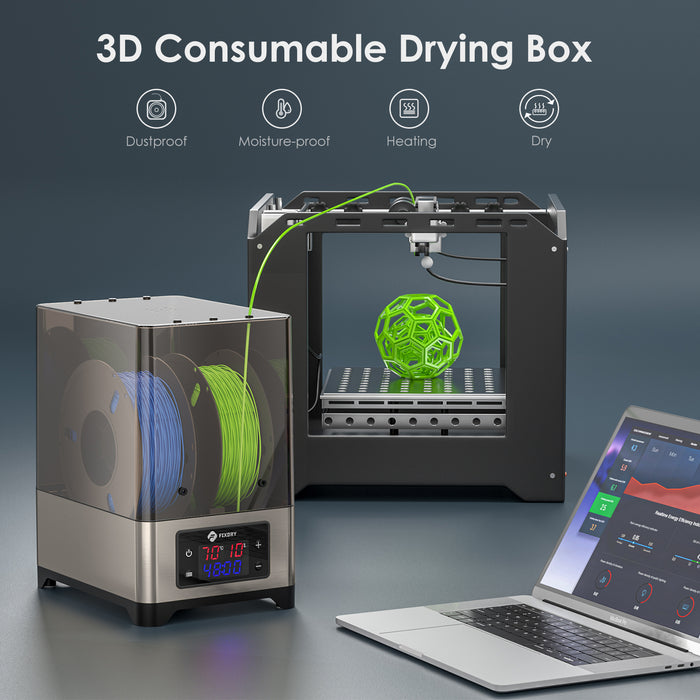
A Comprehensive Guide to Using a Dryer Box for 3D Printing
In the dynamic world of 3D printing, achieving optimal print quality is the ultimate goal for enthusiasts and professionals alike. One crucial factor that significantly impacts print quality is the moisture content of filaments. To address this challenge, many 3D printing enthusiasts turn to dryer boxes or filament dryers. In this guide, we'll explore the ins and outs of using a dryer box or filament dryer to ensure successful 3D printing projects.
Understanding the Importance of Filament Dryers

Before diving into the usage guide, it's essential to grasp why filament dryers are indispensable tools in the 3D printing process. Filament materials such as ABS, PLA, PETG, and Nylon are hygroscopic, meaning they readily absorb moisture from the surrounding environment. Moisture-laden filaments can lead to various printing issues, including poor print quality, nozzle clogs, and filament degradation. A filament dryer box works by gently heating the filaments to remove moisture, ensuring optimal printing conditions and superior print results.
Step-by-Step Guide to Using a Dryer Box
-
Preparation: Start by gathering your filaments and placing them inside the dryer box. Ensure that the filaments are properly spooled and not tangled to facilitate even drying.
-
Setting the Temperature: Most dryer boxes offer temperature control settings. Set the temperature according to the recommended drying temperature for the specific filament material you're using. For example, PLA typically requires lower drying temperatures compared to ABS or Nylon.
-
Adjusting the Timer (Optional): Some dryer boxes come with a timer function, allowing users to set the drying duration. Determine the appropriate drying time based on the moisture level of your filaments and the manufacturer's recommendations.
-
Activating the Dryer: Once the temperature and timer settings are adjusted, activate the dryer box to initiate the drying process. The built-in heater will gently warm the filaments, while the fan ensures proper airflow for thorough drying.
-
Monitoring the Drying Process: Throughout the drying process, periodically check the temperature and humidity levels inside the dryer box. Many dryer boxes feature built-in sensors or displays that provide real-time data, allowing users to monitor the progress and ensure optimal drying conditions.
-
Completing the Drying Process: Once the drying cycle is complete, carefully remove the dried filaments from the dryer box. Inspect the filaments for any signs of moisture or irregularities before proceeding to use them in your 3D printer.
-
Storing the Filaments: To maintain the dryness of the filaments, store them in airtight containers or resealable bags until they are ready to be used in a print job. Avoid exposing the filaments to moisture-rich environments to prevent reabsorption of moisture.
Benefits of Using a Dryer Box
- Improved Print Quality: Dry filaments result in smoother prints with enhanced adhesion between layers and reduced risk of print failures.
- Extended Filament Lifespan: By removing moisture, dryer boxes help prolong the lifespan of filaments, reducing waste and saving costs.
- Prevention of Nozzle Clogs: Moisture-free filaments are less likely to cause nozzle clogs during printing, ensuring uninterrupted printing sessions.
- Versatility: Dryer boxes are compatible with various filament materials, making them suitable for a wide range of printing projects and applications.
In conclusion, incorporating a dryer box into your 3D printing workflow is a simple yet effective way to ensure optimal print quality and reliability. By following this guide and understanding the importance of filament dryers, you can elevate your 3D printing experience and achieve outstanding results with every print.


